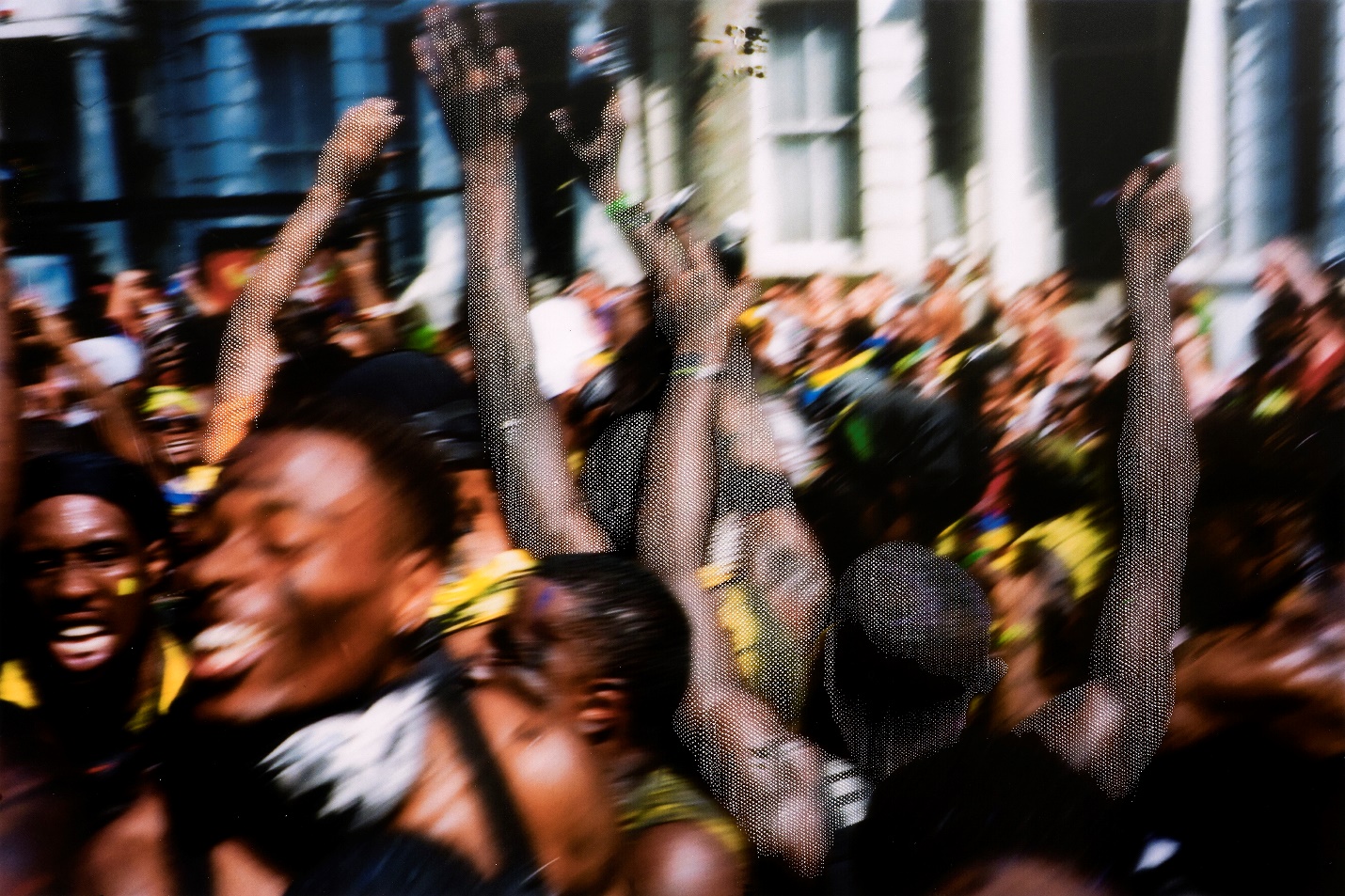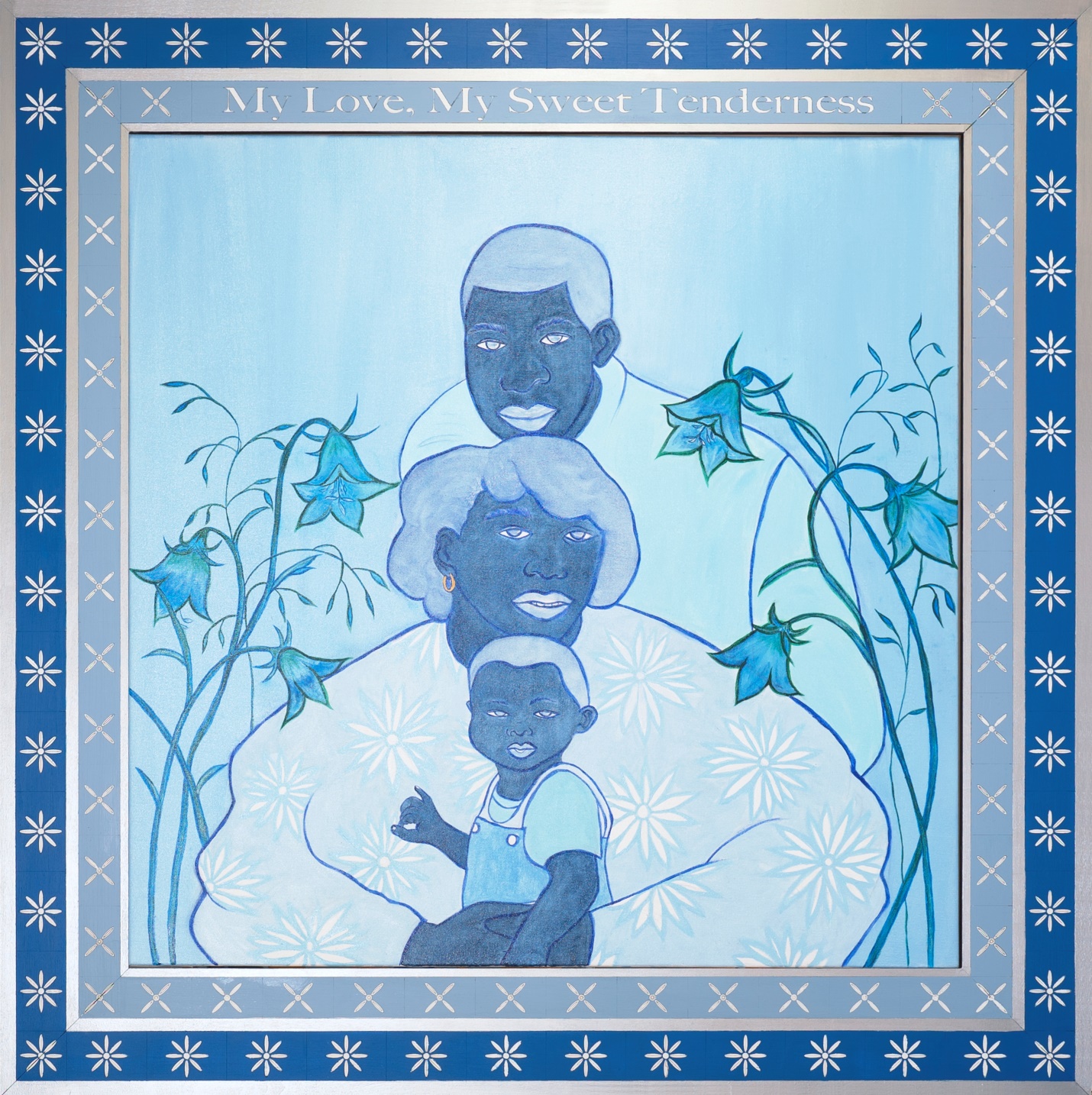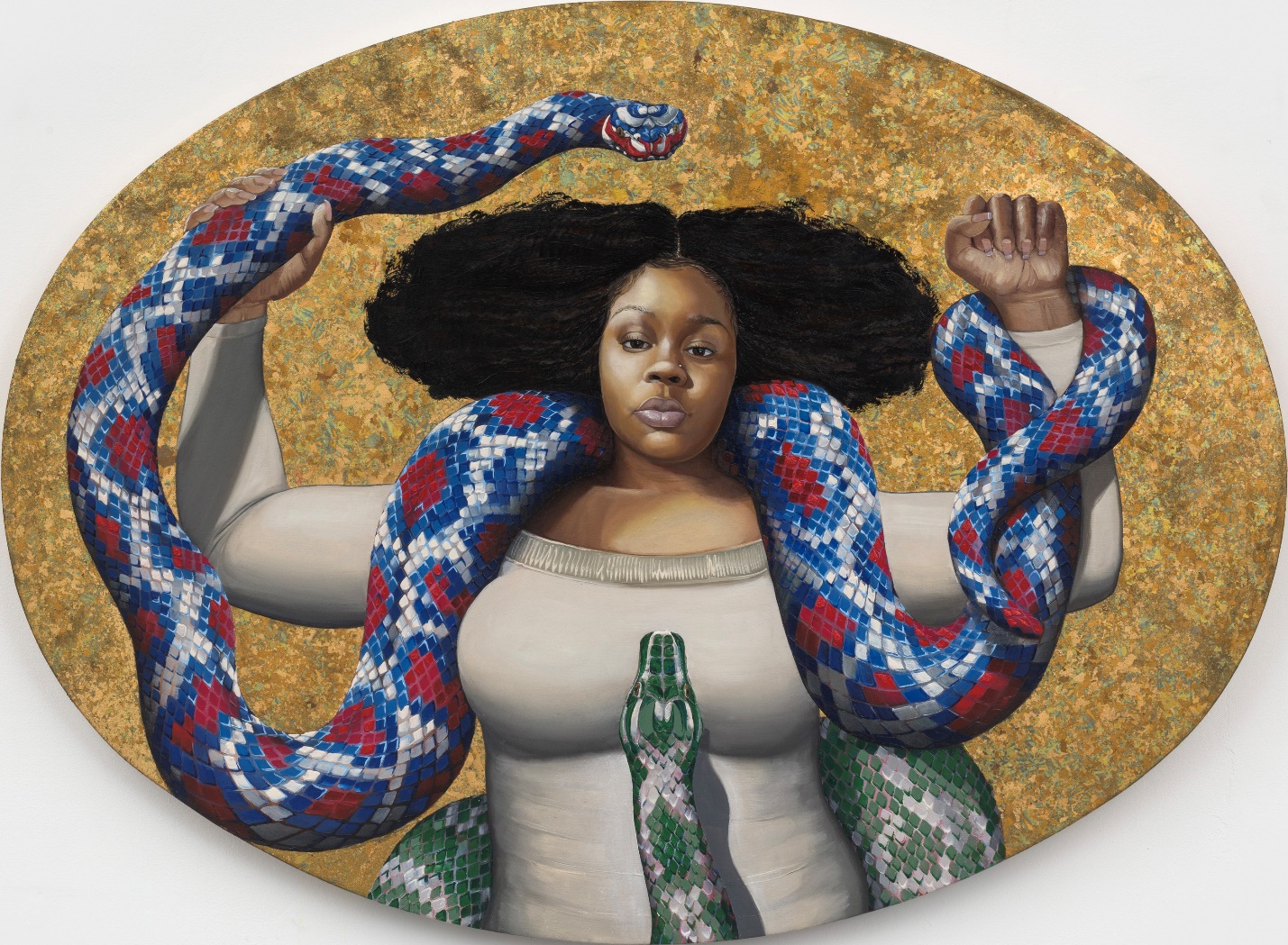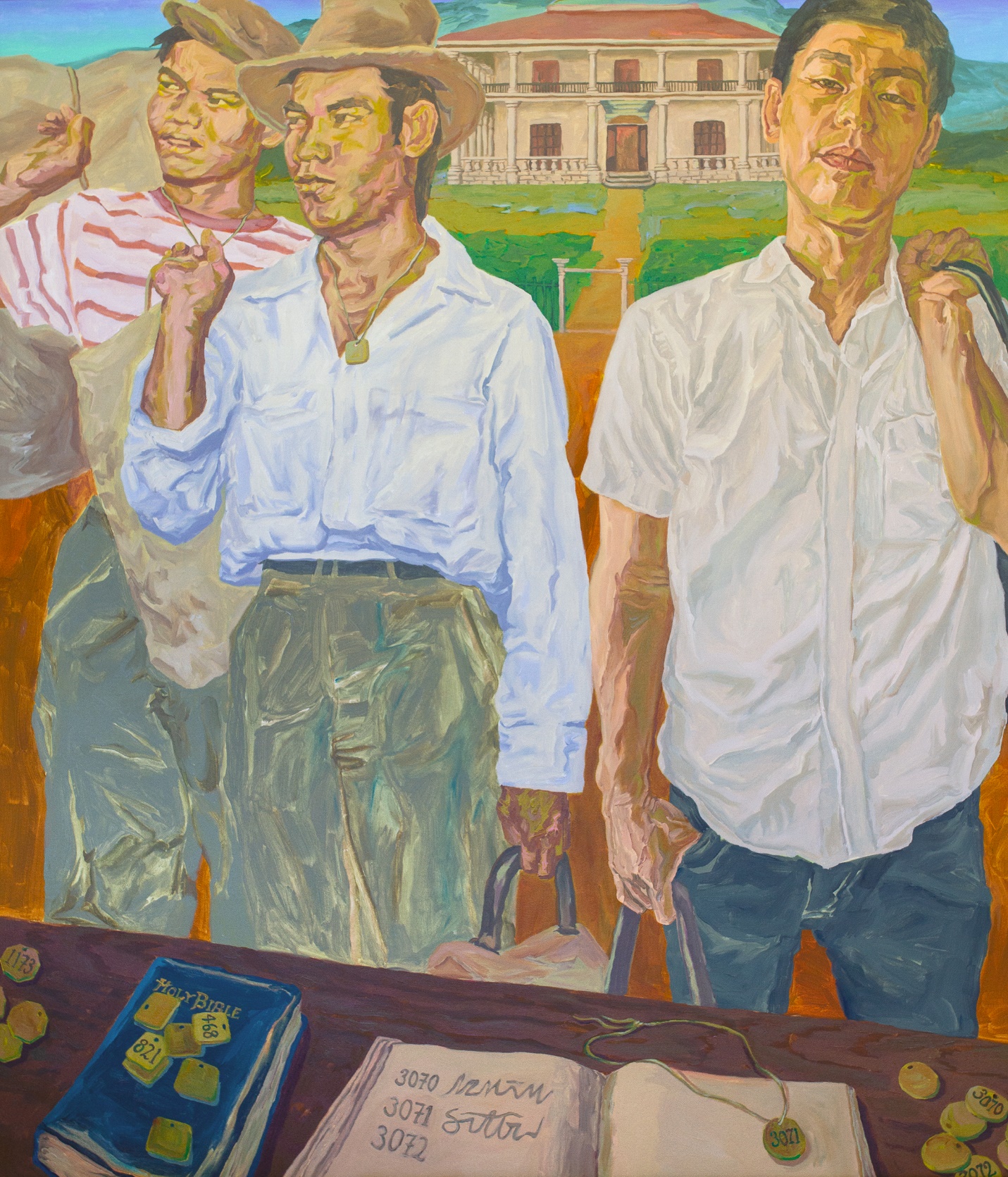Larry Ossei-Mensah Curates Show in London on the Afterlife of Empires


The legacy of colonialism has deeply affected our perception of the world and discourse on power, politics, and capital. However, as Kwasi Kwarteng points out in his 2013 book Ghosts of Empire: Britain’s Legacies in the Modern World, imperialism is chaotic. There was no one model for imperial administration in the British Empire, it was rather a series of fiefdoms managed with varying degrees of competence and brutality. Seeing imperialism not as a sweeping grand idea, but rather random acts of improvisation allows us to forfeit broad condemnation and instead focus on the ubiquitous afterlife of empire on an individual level, thinking less about what imperial and colonial rule were and more about how contemporary society manages their echoes.
A focus on imperialism’s impact on culture today is the intention of the Ghanaian-American curator Larry Ossei-Mensah in his new exhibition Ghosts of Empires II, which just opened at Ben Brown Fine Arts London. Taking their titles from Kwarteng’s book, the first installment of the exhibition took place at Ben Brown Fine Art’s Hong Kong outpost. The London show presents work by fourteen diasporic African and Asian artists who show that there is an opportunity for reckoning, for understanding the complex weave of our cultural fabric by highlighting the experience of oppressed communities.
Drawing on their different cultural backgrounds and working in painting, photography, textile, and mixed media, the artists’ works beautifully highlight the sense of slippage in forming a historical narrative. Rather than play a game of comparison, Ossei-Mensah provides a nuanced view of the intersection of the diasporic experience and displays the richness that diversity brings to contemporary society. Despite the weighty postcolonial overtones, the exhibition is neither dense nor deeply theoretical but it swims in thought-provoking waters, buoyed by fresh and imaginative works of art. The works operate as a personal testimony to the legacies and reverberations of slavery, colonialism, migration, imperialism, and sovereignty. Ossei-Mensah provides the impetus to awaken interest and the space for dialogue but he brilliantly takes a step back to let the conversations unfold organically.

The show opens powerfully with a scene of the total chaos and joy that is the Notting Hill Carnival with Ladbroke Grove #2 by Paul Anthony Smith. The Jamaican-born New York-based artist gives a snapshot of a moment in movement at the London festival, as the bodies, so caught up in the rhythm, blur into colourful abstraction. It feels like jubilation could pour out from the surface dripping into a pool on the floor. But there is a subtly lurking that hints that nothing is so straightforward. Smith employs a technique called picotage where he literally lifts up the surface of the image in stippling, creating a dimension and complexity to the previously flat plane. The result is a veiled effect over three of the figures and one wonders, are they being shielded from our gaze? The artist subtly urges his viewer to investigate the roots of the festival and further of social and institutional racism in the UK while simultaneously speaking to the elements of his own diasporic identity that society lets pass through and integrate within.

No two works span culture and heritage quite like Miguel Ángel Payano Jr.’s two paintings Breonna La Dominadora and 老苦案与棋 (其) 子 AKA…And the World Kept Spinnin. The Afro-Caribbean American artist works between Beijing and New York and draws from the visual languages of his cultures. The first of his works depicts Breonna Taylor, a black woman brutally murdered in her own home by white police officers in the United States in 2020, showing her triumphant as a dragon-slaying snake-charming heroine of the hoodoo tradition. Her face and her name are rightfully etched into the consciousness of every American, however, Payano Jr. is here raising the issues of police brutality and racism as global issues, perhaps presciently in the aftermath of the recent Chris Kaba killing.

Other artists also draw on the impact of portraiture, including Fadekemi Ogunsanya and Livien Yin. Ogunsanya, a multi-disciplinary Nigerian artist based between Lagos and London, offers the work My Love, My Sweet Tenderness. The painting is a family portrait in Nigerian blue, built into the ornate frame as if it was an old masterwork, a relic of history. Their gaze, sombre and disengaged, almost lulls you into quiet reflection. painting recentres the narrative of the Chinese diaspora. A first-generation Chinese-American, Yin uses her practice to unpack the lack of her own cultural heritage and those of other diasporic communities in her formed memory of American history. Painted in the warm tones of the late afternoon light, the work Bango by Day shows us a portrait of three Chinese men and begins to describe the past of Hawaiian sugarcane plantations, offering an untold story of the foreign labour that built American prosperity.
Whether it’s the Theaster Gates or the Jeanne F. Jalandoni, each work currently hanging on the walls of Ben Brown demands attention. When you visit this show (which I do recommend doing), bring a friend, ask questions of the gallery staff, and do a deep dive on Google afterwards, because this is the kind of exhibition that requires discussion, some background information, and the time to think things over. It is our onus to take a critical look at the truths of colonialism and imperialism, no matter how uncomfortable that may be, and recognize that history, culture, and identity are complex and nonlinear. Perhaps then, the silenced voices of the diasporic communities can fully reclaim their narrative and give space for new understanding.
Ghosts of Empires II runs until 22 October 2022 at Ben Brown Fine Arts London, 12 Brook’s Mews, London W1K 4DG.
You might also like
Using Processes of Embodiment Adebunmi Gbadebo Asserts Herself in Art and History
VOICES, an Exhibition That Contextualizes the Black Lives Matter Movement
“My Dear, What Are You Afraid Of?:” Silkworm Pupas Video-Poem in Response to Anti-Chinese Sentiments
What's Your Reaction?
Writer, Cultbytes Somers Gerson is a writer and curator currently based in London. Previously working on a neofeminist analysis of Eva Hesse, she recently completed a Masters in Contemporary Art History from the Sotheby’s Institute, London. l igram l

